new posts in all blogs
Viewing: Blog Posts Tagged with: 1957, Most Recent at Top [Help]
Results 1 - 10 of 10
How to use this Page
You are viewing the most recent posts tagged with the words: 1957 in the JacketFlap blog reader. What is a tag? Think of a tag as a keyword or category label. Tags can both help you find posts on JacketFlap.com as well as provide an easy way for you to "remember" and classify posts for later recall. Try adding a tag yourself by clicking "Add a tag" below a post's header. Scroll down through the list of Recent Posts in the left column and click on a post title that sounds interesting. You can view all posts from a specific blog by clicking the Blog name in the right column, or you can click a 'More Posts from this Blog' link in any individual post.

By:
Becky Laney,
on 6/10/2016
Blog:
Becky's Book Reviews
(
Login to Add to MyJacketFlap)
JacketFlap tags:
book I bought,
1957,
books reviewed in 2016,
charity book,
adult classics,
adult fiction,
YA Fiction,
coming of age,
coming-of-age,
Add a tag
Gidget. Frederick Kohner. 1957. 154 pages. [Source: Bought]
I must admit I was disappointed by Frederick Kohner's Gidget. Here are some things you should know: 1) It was originally published in 1957. 2) It is to some degree based on a true teen girl named Kathy, nicknamed Gidget. 3) Fredrick Kohner, the author, based the book on his own daughter and on his own daughter's coming of age story. 4) It is set in Malibu in the mid 1950s. 5) The book became popular enough that a movie was made. 6) Presumably the movie and book were doing so well, it became a TV show. There was something sweet and verging on innocent about the first movie and about the TV show. Not so the book. It may make it more realistic in some people's opinion. 7) The book is written in first person.
The heroine, Franzie, a.k.a "Gidget," is fifteen years old and in love with the beach, the ocean, all things surf, including surfers--no matter their age. She considers herself all grown up, or, at the very least, mostly grown up. I personally prefer "clean" or even "squeaky clean" books in terms of language. This one has a lot of bad language, and, in particular a lot of taking the Lord's name in vain. I was NOT expecting Gidget to have the mouth that she does, because that is certainly not depicted in the movie or the TV show!!! Her days are devoted to the beach, to surfing, to hanging out with as many surfer guys as she can. She becomes particularly close to two. One being "the love of her life" Jeff (aka Moondoggie) and the other Cass (Big Kahuna). Perhaps because her first sex-dream is of Jeff, she becomes convinced that he is the one and that they are meant to be together forever and ever and of course she must share her dream with him and tell him how much he means to her!
There is great longing and much curiosity in Gidget. She's a boy-chaser. (Also she wants to smoke and drink and be one of the guys.) She doesn't want to be thought of as a fifteen year old girl who should be at home with her parents. Her thoughts are definitely becoming more and more focused on one thing. She's scared to death of it and longing for it at the same time. When Jeff begins to show some interest in her--physical interest--she's more than okay being the "other woman." Who cares if he's got a girlfriend?! He's hers for the summer. His girlfriend isn't here at the beach. His girlfriend doesn't even surf. Surely she's not worth any consideration! Jeff's lips are HER LIPS...at least until college starts back up in the fall.
One could easily say that nothing and everything happens in this one.
Nothing if you are looking at it in terms of events alone. It's a bit repetitive. Wake up. Go to beach. Follow Moondoggie around. Surf. Get sick for a week or maybe two. Get better. Go to beach. Have awkward conversations with brother-in-law and parents. Go to beach. Sneak out to all-night beach orgy. Go surfing. Make silly reflective statements about how mature you are now as compared to then.
Everything if you are looking at it in terms of capturing very angst-y, awkward, embarrassing moments that may be common enough to one and all but more cringe-worthy than anything else.
One thing that makes it creepy, for me, is that it is a father writing about his daughter. Even if it's fifty-fifty in its origins--half fictional, half based on true events/people--it's still a bit weird for me when I think about a father writing about his daughter's lust and curiosity. There are just some scenes in this one that are uncomfortable if you keep this in mind. Other scenes are just awkward. Like when Jeff tries to explain to Gidget that dreams are dreams are dreams and not actual reality or signs from the universe that you belong together.
Reading the book did make me appreciate the movie more. The changes made between the book and the movie were for the best, I think. The romance comes across better, cuter.
© 2016 Becky Laney of
Becky's Book Reviews
Doctor Zhivago. Boris Pasternak. Translated by John Bayley. 1957. 592 pages. [Source: Library]
Doctor Zhivago is one of those books that I've "been meaning to read" for years now. Once I decided to actually read it, it took me just five days. "Actually" is a great little word, I've found.
So is the book like the movie? Or. Is the movie like the book? The book is a lot more complex than the movie, in my opinion. The movie seems to make everything about Dr. Zhivago and Lara, and the depths of their oh-so-amazing love. That is not the case in the book. (That's not to say that Lara isn't one of the major characters in the book, but, the book doesn't revolve around her.)
So essentially, the novel covers a little over three decades of Russian history. And those three decades are turbulent, bloody, terrifying, cruel. Probably three-quarters of the novel is set between the years 1910-1920.
If you come to the novel expecting a ROMANCE, then, chances are you'll be bored. It is "about" so much more than how a man feels about a woman.
Featured prominently in the novel: war, politics, revolution, religion, philosophy, economics, ethics, friendship, and, perhaps then love, romance, marriage, and family.
The main character is Doctor Zhivago (Yurii Andreievich Zhivago; aka Yura). Readers are first introduced to him at his mother's funeral. They learn that his father abandoned him and his mother. He'll be looked after by an uncle (Uncle Kolia). (This definitely varies from the movie.) As a teen, he and a friend (Misha Gordon) live with the Gromekos family. Yura later marries into this family, marries Tonia Gromeko. The start of World War I in 1914 disrupts his happy home.
Lara (Larisa Feodorovna Guishar) is another main character. While in the movie she is without a doubt the one and only love of Dr. Zhivago's life, in the book she plays a subtler role perhaps. Readers do spend some time with her through the decades. But then again readers spend a good amount of time with Tonia as well.
There is a third woman in Dr. Zhivago's life. A woman that the movie fails to portray at all. His "third wife" Marina (Marinka). He spends the most time (day-to-day, routine) with this 'third' family. They have two children together, and, he's there for the raising of them for the most part.
Some of his friendships are stabler than his love life. Though to be honest, this isn't completely his fault! Like when he's compelled (kidnapped) into the army during the Revolution. He was forcibly separated from his family, from returning to his family. (Part of me does wonder, if he hadn't been on the road--returning from the town to his country farm, returning from seeing Lara-- would he have been kidnapped? Would they have sought him anywhere he happened to be, since they knew there was a doctor in the region?) After he escapes, and the escape isn't quick in happening, he learns that his family has been deported to France. He's not exactly able to join them, and, yet, one wonders once again...IF he could join them, if he was granted permission from the country and allowed to leave Russia, and if he had the money to do so...would he? Or would he choose to remain in Russia and start a new life with Lara.
The story and the drama are certainly complex enough. At times I felt the characters were complex as well. At other times, I thought they were a bit flat and idealistic. I never really felt like I could "understand" the characters--understand their thought processes, motivations, and such.
I'm not sure I "liked" any of the characters in the traditional sense. But at the same time, I felt the story compelling enough. Especially if you go into it not expecting a romance. Plenty of tragedy, I suppose, if you want to look at it like that.
I don't think Dr. Zhivago's life turned out like he planned or hoped or dreamed. His life was interrupted and disrupted by outside forces, perhaps. In some ways, Doctor Zhivago reminded me of Gone With The Wind.
I am glad I read it. Have you read it? What did you think?
© 2016 Becky Laney of
Becky's Book Reviews

By:
Becky Laney,
on 4/30/2015
Blog:
Becky's Book Reviews
(
Login to Add to MyJacketFlap)
JacketFlap tags:
MG Realistic Fiction,
books reviewed in 2015,
family,
friendship,
Summer,
J Fiction,
Newbery Honor,
J Realistic Fiction,
children's classic,
MG Fiction,
library book,
1957,
Add a tag
Gone Away Lake. Elizabeth Enright. 1957. 256 pages. [Source: Library]
I enjoyed reading Elizabeth Enright's Gone-Away Lake. I am so glad to be participating in the Newbery Through the Decades reading project. I've been motivated to read many books that I probably never would have read.
Gone-Away Lake tells the summertime adventure of two cousins: Portia and Julian. Early on in the summer these two stumble upon a muddy, dried-up lake. They discover a "ghost town" of sorts--the remnants of a lake resort community. To their great surprise, they discover that it is not as abandoned as it first appeared. Two people still live there. A brother and sister. (They live in separate houses.) Her name is Mrs. Cheever. His name is Mr. Payton. The four become friends--good friends. There are thousands of stories to be shared. Much to explore. Much to do.
I enjoyed this one very much. It's not an action-packed story (though it does have an intense scene or two--at least relatively speaking). It's definitely driven by the interesting characters. (Something I can definitely appreciate!)
Have you read Gone-Away Lake? What did you think? How do you think it compares to Thimble Summer?
© 2015 Becky Laney of
Becky's Book Reviews
The Cat In the Hat. Dr. Seuss. 1957. Random House. 61 pages. [Source: Library]
First sentence:
The sun did not shine. It was too wet to play. So we sat in the house all that cold, cold wet day.
Premise/Plot: Sally and her brother can't find ANYTHING fun to do on a rainy day until a strange cat comes to their house, invites himself in, and turns everything topsy-turvy. This rhyming book also stars a fish, who knows that the Cat in the Hat's fun only leads to trouble, and Thing One and Thing Two. (One of the games they play is up-up-up with a fish. Another is fun-in-a-box.)
My thoughts: I've read this one dozens of times. It's so familiar, so fun. It's hard for me to imagine what it would be like to read it for the first time. I've also heard the audio book read by Kelsey Grammer. Is this my FAVORITE Seuss book? I'm not sure that it is. But it's so fun and silly.
Have you read The Cat in the Hat? Did you like it? love it? hate it? I'd love to know what you think of it!
If you'd like to join me in reading or reading Dr. Seuss' picture books (chronologically) I'd love to have you join me! The next book I'll be reviewing is The Cat in the Hat Comes Back.
© 2015 Becky Laney of
Becky's Book Reviews

By:
Becky Laney,
on 12/21/2014
Blog:
Becky's Book Reviews
(
Login to Add to MyJacketFlap)
JacketFlap tags:
picture books,
Christmas,
2007,
2009,
2014,
1912,
1922,
review copy,
library book,
1957,
1816,
books reviewed in 2014,
1823,
Add a tag
And Then Comes Christmas. Tom Brenner. Illustrated by Jana Christy. 2014. Candlewick Press. 32 pages. [Source: Review copy]With some picture books, you almost have to read them a few times before you decide if you like them or not. Such is the case with Tom Brenner's And Then Comes Christmas.
And Then Comes Christmas is all about establishing atmosphere and celebrating traditions. Atmosphere is established by description and detail. Phrases like "bare branches rake across the sky" and "romp in snow as smooth as bedcovers." Traditions are celebrated: choosing a tree, decorating a tree, making cookies, wrapping presents, reading stories, attending programs, making crafts, seeing Santa at the mall, etc. Some traditions will likely be familiar. Some may not be. Not every child gets to play in the snow before Christmas--or after Christmas, for that matter! But all children could choose to make paper snowflakes to decorate their windows.
It is a book that slowly and gently counts down to Christmas. (Though not with actual numbers.) There is a certain pattern to it...multiple when/then passages.
I think my favorite when/then passage is:
When elves and reindeer appear in stores, and small trains race through toy villages, and piles of presents nestle in cotton drifts...Then hop from foot to foot, waiting to sit on Santa's knee."
I like this one well enough. But I would hate to have to diagram any of these sentences!
How the Grinch Stole Christmas. Dr. Seuss. 1957. Random House. 64 pages. [Source: Review copy]I love it. Of course I love it. How could I not? Now, I will admit that I didn't read the actual book until I was an adult. It wasn't one of the Seuss books that I owned growing up. But the christmas special--the cartoon--is one I've seen dozens and dozens of times. The book itself is lovely. If you love one, you'll love the other.
So in case you're unfamiliar with the book or special, The Grinch hates Christmas. His neighbors, the Whos in Who-ville, love Christmas. He is super-cranky this year, and, he decides to steal it. He thinks Christmas is all about the stuff. Take the stuff, do away with it altogether, right? Wrong. The Whos in Who-ville teach the Grinch a lesson about joy.
One of my favorite things about it is it's just SO quotable. Here are a few of my favorite lines:
Every who down in Who-ville liked Christmas a lot...But the Grinch, who lived just north of Who-ville, did NOT!
And THEN they'd do something he liked least of all! Every who down in Who-ville, the tall and the small, would stand close together, with Christmas bells ringing. They'd stand hand-in-hand. And the Whos would start singing. They'd sing! And they'd sing! AND they'd SING! SING! SING!
Then he slid down the chimney. A rather tight pinch. But, if Santa could do it, then so could the Grinch.
Then the last thing he took was the log for their fire! Then he went up the chimney, himself, the old liar.
It came without ribbons! It came without tags! It came without packages, boxes, or bags!"
'Twas the Night Before Christmas. Clement C. Moore. Illustrated by Jessie Willcox Smith. 1823/1912. HMH. 32 pages. [Source: Review copy]I've read 'Twas the Night Before Christmas plenty of times before. But this is the first time I've read the edition of the poem published as a picture book in 1912 with illustrations by Jessie Willcox Smith.
The poem itself is as delightful as it ever is. I think this is a poem that feels familiar no matter what. You don't have to seek it out year after year. It just finds you and sticks. It's just part of the Christmas culture. (I love the Sesame Street play starring Bert and Ernie as featured in Muppet Family Christmas.)
It was interesting to see the illustrations from this time period. (You may see the illustrations at
project gutenberg.) Did I love the illustrations? Not particularly.
The Nutcracker and the Mouse King. E.T.A. Hoffmann. Adapted by Wren Maysen. Illustrated by Gail de Marcken. 2009. 56 pages. [Source: Review copy]I am not as familiar with the original story (1816) as I am the story of the ballet. (The two are different.) It's an odd book. I'll be honest. It is just as strange as Alice in Wonderland. (Though, of course, The Nutcracker and the Mouse King came decades before Alice.)
Marie Stahlbaum is the heroine of The Nutcracker and the Mouse King. The book opens with Marie and her brother, Fritz, playing together and waiting, waiting, waiting for all the delights of Christmas. They are waiting to enter the large drawing room where the tree is, and where the presents are. Their mother and father are there as well. As is Godfather Drosselmeier. There is a new doll, Clara, for Marie. There are new toy soldiers for Fritz. And there is a lovely toy castle, Marzipan Castle, for them both. The Nutcracker is a gift for the whole family. Marie does take special interest in it, this interest remains despite the fact that Fritz breaks the Nutcracker when he's showing off.
Marie stays up past her bedtime in the drawing room. This is when things get strange: seeing Godfather Drosselmeier on top of the clock, seeing all the mice attack, seeing the Mouse King, etc. She witnesses a battle. Towards the close of that battle, she throws a slipper at the wicked Mouse King.
Marie awakens in bed the next day. Her mother had found her bleeding on the floor near the tree and toy cupboard. She spends the next few days at least in bed. Spending so much time in bed might seem horrible, and, perhaps Marie found it to be so part of the time at least. But her Godfather tells her strange stories which she believes of course.
Plenty of The Nutcracker and the Mouse King is the Godfather's strange, strange story. This story is about "a king, a queen, some mice, and a young princess named Pirlipat." The story is rich in detail:
Princess Pirlipat was very lovely. She had flawless white skin, with bright blue eyes and flowing locks of golden hair. The generals, noblemen, and ministers of the state all told the king and queen that they had never seen a baby like the princess. Not only was the princess beautiful, but she was also born with two perfect rows of teeth!
The queen insisted that Princess Pirlipat's cradle always be guarded. The royal guards were placed at Pirlipat's door, and directly beside her cradle sat six nurses...and with these six nurses sat six big cats. The nurses had strict orders from the queen to keep one cat in each of their laps and pet them all day and all night so that they would never stop purring. This was indeed strange. No one knew why the queen went to such lengths to protect her princess, but still, every night, the sound of purring cats echoed throughout the castle. But the queen had a very good reason to be on guard, for a curse had been placed on her family.
Readers learn of the family curse, of course. And it's something. The story becomes more and more bizarre as it unfolds. But to Marie, it is completely captivating.
Meanwhile, we have not seen the last of the mice or their dreadful King. Marie knows that sooner or later the final battle will come....
There does come a time when the Nutcracker takes Marie to his magical, fantastic home in Toyland.
So readers see Marie awaken again from yet another dream. Will Marie's ultimate dream come true?
This story is so strange and bizarre and rich in detail--pure fantasy.
The Velveteen Rabbit. Margery Williams. Illustrated by William Nicholson. 1922/2014. Random House. 48 pages. [Source: Review copy] Do you know what it is to be real? One little Christmas bunny will learn this and plenty of other life lessons in Margery Williams' classic tale The Velveteen Rabbit.
The Velveteen Rabbit opens with a young boy receiving a rabbit for a Christmas present. All is lovely for the rabbit that first day. But the toy is quickly forgotten. He becomes one toy of many, many, many toys. He's not exactly special to the boy or the other toys. In fact, I'd say the other toys bully him a bit. All except for the Skin Horse, the oldest toy in the nursery. It is this horse that tells the Rabbit all about being real, what it takes to be real, what it feels like, how it changes you, etc.
"Real isn't how you are made," said the Skin Horse. "It's a thing that happens to you. When a child loves you for a long, long time, not just to play with, but REALLY loves you, then you become Real." "Does it hurt?" asked the Rabbit. "Sometimes," said the Skin Horse, for he was always truthful. "When you are Real you don't mind being hurt." "Does it happen all at once, like being wound up," he asked, "or bit by bit?" "It doesn't happen all at once," said the Skin Horse. "You become. It takes a long time. That's why it doesn't often happen to people who break easily, or have sharp edges, or who have to be carefully kept. Generally, by the time you are Real, most of your hair has been loved off, and your eyes drop out and you get loose in the joints and very shabby. But these things don't matter at all, because once you are Real you can't be ugly, except to people who don't understand." "I suppose you are real?" said the Rabbit. And then he wished he had not said it, for he thought the Skin Horse might be sensitive. But the Skin Horse only smiled. "The Boy's Uncle made me Real," he said. "That was a great many years ago; but once you are Real you can't become unreal again. It lasts for always." (5-8)
The Velveteen Rabbit is one of my favorite Christmas books. I love the nursery magic. I love the ending. It was originally published in 1922. The story and illustrations in this edition are original. This is a beautiful edition of the book. One of the best I've seen.
The Velveteen Rabbit was published several years before A.A. Milne's Winnie the Pooh and House at Pooh Corner. Chances are if you enjoy one, you'll enjoy the other.
Do you have a favorite toy-come-to-life fantasy?
Fancy Nancy: Splendiferous Christmas. Jane O'Connor. Illustrated by Robin Preiss Glasser. 2009. HarperCollins. 32 pages. [Source: Library]I enjoyed reading Fancy Nancy Splendiferous Christmas. This is actually the first Fancy Nancy book I've read, so it served as a good introduction to the series as well. I liked it very much. I love the illustrations. They were a bit busy, perhaps, but that is part of their charm, I think. I love the amount of detail. Every time I read it, I notice something I hadn't noticed before. There is something almost precious about this book--perhaps because of the illustrations, or even the text. But I don't mind that in a picture book now and then.
In this one, Fancy Nancy and her family are decorating the house for Christmas. They are doing plenty of christmas-y things all together as a family. One of things they are doing is waiting. Waiting is a big part of the holiday, in my opinion. They are waiting for the Grandpa to arrive. When he arrives, they can begin to decorate the tree. They always wait for him. And I imagine every year, she gets a bit impatient because she is oh-so-excited. This year, however, her parents allow her to put on the brand-new tree-topper, something that she picked out and bought with her own money--in the summer...I won't spoil this one. But I ended up liking it very much!
What Cats Want for Christmas. Kandy Radzinski. 2007. Sleeping Bear Press. 32 pages. [Source: Library] For cat-lovers, this is a charming-enough book to read at Christmas time. The premise is simple: if cats could write letters to Santa, what would they ask for. Each spread shows a cat and his/her letter to Santa. The letters are all written in rhyme. The letters are predictable enough, but, the idea I think is original. I do wish there was more variety in what the letters requested, however. And some letters seem a bit dark and twisted.
I really liked the illustrations. I think I liked looking at the various cats better than reading the letters.
It's Not About You Mr. Santa Claus. Soraya Diase Coffelt. 2014. Morgan James Publishing. 34 pages. [Source: Review copy]There are plenty of children who write letters to Santa each year. But how many letters to Santa include the gospel message? In this picture book a young boy does just that.
Dear Mr. Santa Claus,
It's me again--a kid. I know I've written lots of letters to you before with long lists of gifts I wanted for Christmas. Well, not this year. This letter is different. I discovered the real meaning of Christmas has nothing to do with you at all. It is about a very special gift. I want to tell you about this gift. By the way, how are you and Mrs. Santa Claus doing? Have you lost any weight? Did your helpers, the elves, grow any taller? Do you still like cookies and milk? Are you still wearing that red, furry outfit? I've always wondered, what do you wear in the summer time?
It's a simple book with a timeless message. Which timeless message? Well, I suppose I could pick one or two that stand out. First, that Christmas is not about Santa and presents and shopping. It is actually about celebrating Jesus. Second, that the gospel is too good to keep to yourself. The gospel is for sharing.
The real Christmas story began a long time ago, when a Roman emperor named Caesar Augustus ordered that a census be taken. A census is when all the people had to be counted. At that time, A man named Joseph and his wife, Mary had to take a long journey to the city of David, known as Bethlehem, for the census. It wasn't an easy journey as Mary was going to have a baby soon.
The focus of this book is on retelling the Christmas story and communicating the gospel message. Probably leanings toward more retelling.
I was pleasantly surprised by the illustrations. I thought they were very nicely done.
Will this book please every single reader? Probably not. It may not be a perfect fit for every family this holiday season. But I think for some it will be a great find.
© 2014 Becky Laney of
Becky's Book Reviews

By:
Becky Laney,
on 7/6/2014
Blog:
Becky's Book Reviews
(
Login to Add to MyJacketFlap)
JacketFlap tags:
classics,
picture books,
cats,
J Fiction,
early readers,
2005,
1969,
1973,
children's classic,
1949,
1947,
1954,
1960,
1957,
1972,
books reviewed in 2014,
Add a tag
The School for Cats. Esther Averill. 1947/2005. New York Review Children's Collection. 32 pages. [Source: Library] The School for Cats was originally published in 1947. It is part of a larger series of books starring the (black) cat Jenny Linsky and her friends. The School of Cats is not the first in the series, but, it is the first in the series that my library actually had. In this "Jenny's Cat Club" book, readers meet Jenny as she leaves her home in Greenwich Village to attend school in the country. She is very, very, very unsure about the whole school thing. But her master, Captain Tinker, wants her "to study cat lore in the country." There is definitely something of an adventure in this one when Jenny runs away from school. But it also contains a lesson on friendship and adapting to new situations.
I enjoyed this one. I look forward to reading others in the series.
Jenny's Moonlight Adventure. Esther Averill. 1949/2005. New York Review Children's Collection. 32 pages. [Source: Library]Jenny's Moonlight Adventure was originally published in 1949. It is part of a larger series of books starring Jenny and her friends. I did not like this book as well as The School for Cats. It is a Halloween adventure. Jenny must prove how brave she is both for herself and for her friends. She reluctantly accepts a job that only she can do. She is to carry a nose flute to a sick friend (another cat, of course). The job is "dangerous" because it requires her to be brave and clever enough to get past several unfriendly neighborhood dogs.
For readers who celebrate Halloween, this one might prove charming.
Jenny Goes to Sea. Esther Averill. 1957/2005. New York Review Children's Collection. 140 pages. [Source: Library]Of the Jenny Linsky books I've read so far, Jenny Goes to Sea is probably my favorite. In this chapter book originally published in 1957, Jenny Linsky and her two brothers, Edward and Checkers, travel the world with their owner, Captain Tinker. These three cats become very good friends with Jack Tar, the ship's cat. These three leave the ship in company with Jack Tar at many of the ports including Capetown, Zanzibar, Singapore, and Bangkok. Adventures come oh-so-naturally.
I definitely recommend this series to cat lovers of all ages.
Jenny and the Cat Club: A Collection of Favorite Stories About Jenny Linsky. Esther Averill. 1973/2003. New York Review Children's Collection. 176 pages. [Source: Library]Jenny and the Cat Club features five stories by Esther Averill. These were originally published in 1944, 1948, 1951, 1952, and 1953. The stories are: "The Cat Club," "Jenny's First Party," "When Jenny Lost Her Scarf," "Jenny's Adopted Brothers," and "How the Brothers Joined the Cat Club."
The Cat Club introduces readers to Jenny Linsky, a "shy little black cat" from New York City. Readers meet Jenny and her owner Captain Tinker. In this adventure, Jenny receives her signature red scarf, a present from her owner who happens to knit. This red scarf helps Jenny gain enough confidence to talk to other cats in the neighborhood. In this one, readers learn about the neighborhood cat club, they are briefly introduced to the other cats, and they learn that members of the cat club must be special.
Jenny's First Party is a story focusing on Jenny and her friend Pickles (the fire cat) teaming up and strolling the neighborhood. Both are looking for fun, fun, fun. But neither have money. (What cat has money?!) They stumble upon a groovy party and a great time is had by all. Readers learn that Jenny can dance a happy little sailor's hornpipe dance.
"When Jenny Loses Her Scarf" is about when Jenny's beloved red scarf was stolen by a dog. The dog, Rob the Robber, refuses to give it back. Jenny seeks help from Pickles the fire cat. Pickles is just the one to help her, it turns out, for justice is dealt out after all. The dog's hangout catches on fire! Pickles retrieves the scarf as he's putting out the fire.
"Jenny's Adopted Brothers" is about when Jenny meets two stray cats: Checkers and Edward. Checkers, readers learn, retrieves things. Edward, we learn, is a poet. Jenny meets these two, feels sorry for them, and introduces them to Captain Tinker. When these two are adopted by the Captain, Jenny feels very jealous! Will having two other cats in the house prove too much?!
"How The Brothers Joined the Cat Club" is obviously about when Edward and Checkers join the club. Jenny is hesitant to include her two new brothers at first. After all, she likes the idea that the club could remain her own little secret and her way to get away from them. But. Being the good little cat that she is, Jenny soon realizes that she could never really keep her brothers from missing out on the awesomeness of the cat club. She helps them discover their talents and introduces them to all her friends.
I liked this one. I did. I like meeting Jenny and the other cats.
The Hotel Cat. Esther Averill. 1969/2005. New York Review Children's Collection. 180 pages. [Source: Library]The Hotel Cat is an enjoyable children's novel by Esther Averill. It was originally published in 1969.
The Hotel Cat stars a cat named Tom. He lives at the Royal Hotel, an eight-story building in New York. It is on the older side. And the hotel isn't doing the best business. But all that happens to change during the novel. Tom who is used to having the place to himself, for the most part, at least in terms of CATS ON THE PLACE discovers that there are cats there with their owners. The first few cats he meets he is rude, very rude. But after Tom's owner, Mrs. Wilkins, talks to him, he decides to be more gracious and welcoming. It isn't long before he meets three cats: Jenny, Edward, and Checkers. And those aren't the only cats from the cat club he happens to meet. A difficult winter has resulted in a lot of broken boilers and frustrated cat-owning homeowners are staying at the Royal Hotel. How convenient!
Tom learns a lot about making and keeping friends in The Hotel Cat.
I liked this one.
Captains of the City Streets. Esther Averill. 1972/2005. New York Review Children's Collection. 164 pages. [Source: Library] Captains of the City Streets is a children's novel by Esther Averill originally published in 1972. Two cats star in Captains of the City Street. In this one, the author provides the back story for two cats who have been a part of essentially the whole series. Sinbad and The Duke. These two stray cats are best buddies. They haven't been "owned" by a human in what seems like a very long time by cat reckoning. They are street cats, traveling cats, going from city to city to city, seeing all there is to see, always seeking handouts, but never becoming dependent on any one human. The two travel to "old New York." They are looking for a place of their own, a safe place to stay. They find it. They also find one old man who dependably gives them food day after day on their own terms. He comes and goes leaving the food, never trying to approach the cats, never pushing a relationship. The two cats slowly but surely decide that maybe just maybe humans aren't all that bad. That is when they stumble upon the Cat Club. They learn that the kind human is Captain Tinker. The first cat they befriend is Macaroni. The two are invited to join the Cat Club, but, are hesitant. Do they want to stick around that long? Do they want the responsibility?
I liked meeting Sinbad and Duke. The stories that focus on Jenny certainly mention these two quite a bit, but, this is the first time that readers really learn about these two in detail. It is a fun book.
Jenny's Birthday Book. Esther Averill. 1954/2005. New York Review Children's Collection. 44 pages. [Source: Library] Jenny's Birthday Book by Esther Averill was originally published in 1954. In this cat club book, Jenny Linsky, our star cat, our shy little black cat with the red scarf, has a special birthday with all of her friends whom we've met through the series. Pickles. Sinbad and The Duke. Florio. To name just a few. It is a lovely birthday. The book itself is sweet, simple, and charming. Especially if you like cats and vintage picture books. I think my favorite illustration is of all the cats dancing the Sailor's Hornpipe in the park.
The Fire Cat. Esther Averill. 1960/1983. HarperCollins. 64 pages. [Source: Own] I enjoyed revisiting The Fire Cat by Esther Averill. I read this one many times as a child. But I had no idea it was part of a larger series of books, the Cat Club series by Esther Averill. The Fire Cat does not star Jenny Linsky. It stars Pickles. Pickles has been a delightful character in almost all of the other books in the series. He is probably one of Jenny's best best friends. In the Fire Cat, readers learn more about Pickles. Was he always a fire cat? Of course not! There was a time he was a hopeless cat that was a little bit bad and a little bit good. One of the firemen takes an interest in him and takes him to the fire station. He is hoping that the chief will allow Pickles to stay. Pickles most definitely wants to stay. He wants to prove himself worthy, so he decides to learn by example. He learns to slide down the pole, for example, he learns how to work a hose. The fire chief is definitely charmed, I imagine cat-loving readers are just as charmed. I certainly was! The Fire Cat is a feel-good read. Readers see Pickles transform from a slightly-naughty homeless cat to a brave and dutiful fire cat. He learns responsibility and compassion. Overall, it's just a good story.
© 2014 Becky Laney of
Becky's Book Reviews
April Lady. Georgette Heyer. 1957/2005. Harlequin. 270 pages. [Source: Library]
In some ways, April Lady is a very simple novel. A husband and wife are madly in love with each other; but each thinks the other only married out of convenience. They are horrible at communicating with one another. Nell may love her husband dearly, but clearly she does not understand him. Perhaps the couple's biggest problem is that of inequality. Instead of being husband and wife, they sometimes act like parent and child. (There is quite a bit of scolding at times. I can see why, she does act incredibly foolish. But still. His scolding isn't going to solve anything!)
April Lady may be predictable from cover to cover, but that does not stop this romance from being a satisfying one. What I enjoyed most about April Lady was the characterization. It wasn't that I loved the heroine, Nell, or her husband, Cardross; it was that Nell and Cardross were surrounded by interesting characters.
So. Nell has a brother, Dysart, who is a reckless gambler. (He's a LOT of fun, however.) Giles (Cardross) has a half-sister, Letty. She's silly, foolish, stubborn, and spoiled. Letty is in love with Jeremy Allandale. She is insisting (to anyone who will listen) that they HAVE to get married right NOW. It's not good enough that her brother will consent to the match in two or three years when she is nineteen or so. Now, now,
now. Cardross also has a good friend, a cousin named Felix Hethersett.
I loved Felix, Dysart, Letty, and Jeremy more than Cardross and Nell. If this romance did not have such a great cast of "minor" characters, it would be awful.
22 / 33 books read. 67% done!
© 2013 Becky Laney of
Becky's Book Reviews
The Door Into Summer. Robert A. Heinlein. 1957. Del Rey. 300 pages.
One winter shortly before the Six Weeks War my tomcat, Petronius the Arbiter, and I lived in an old farmhouse in Connecticut. There were many, many things I really just loved about this science fiction novel by Robert A. Heinlein. I loved the opening--the first few pages--which introduce the concept of a "door into summer." If you like/love cats, I think you'll appreciate it!
While still a kitten, all fluff and buzzes, Pete had worked out a simple philosophy. I was in charge of quarters, rations, and weather; he was in charge of everything else. But he held me especially responsible for weather. (2)
I found it interesting to see TWO visions of the future. Written in 1957, Robert Heinlein has primarily imagined two years: 1970 and 2001.
The hero of The Door Into Summer, Daniel Boone Davis, is an engineer who is down on his luck. He has been cheated in love and business. And it's the business loss that seems most traumatic. He wants justice; he wants revenge. But at the same time he just wants to escape the mess his life has become. So which does he want more? To escape the pain and stress and confusion of his current life, he considers entering the cold sleep. (In fact, he completes the paperwork.) Thirty years may be just long enough to sleep. The world will have to be better in 2000 than it is in 1970, right? But the choice of revenge or escape may be taken out of his hands--after an encounter with the two people who did him wrong. (He's having second thoughts at the time.)
When D.B. Davis wakes up in December 2000, he learns just how much has changed...some of these changes are good. But there are a couple of things that just don't make sense. Things that don't have any easy answers...unless time travel IS possible.
The Door Into Summer is an interesting read with a fun premise. I definitely enjoyed it. I think it may be one of my favorite Heinlein novels so far.
Read The Door Into Summer
- If you are a fan of science fiction with a particular interest in vintage or classic science fiction
- If you are a fan of Robert Heinlein, or if you're looking for a good introduction to Robert Heinlein
- If you enjoy reading about how different people envisioned the future
- If you are a fan of time travel
- If you like cats
- If you don't mind slightly creepy 'romantic' endings
Have you read this one?! What did you think? What did you think of the ending? Of the "romance" in this one? Did you find it merely slightly creepy or is it
very creepy?
© 2012 Becky Laney of
Becky's Book Reviews
Henry and the Paper Route. Beverly Cleary. 1957/1990. HarperCollins. 208 pages.
One Friday afternoon Henry Huggins sat on the front steps of his white house on Klickitat Street, with his dog Ribsy at his feet. He was busy trying to pick the cover off an old golf ball to see what was inside. It was not very interesting work, but it was keeping him busy until he could think of something better to do.Now that he has his bicycle, now that he's almost eleven, Henry is dreaming of only one thing. He wants a paper route. He's seen Scooter delivering papers on his route for several years now. And he's always been a little envious. He knows that he's strong enough, responsible enough, but how can he prove it to Mr. Capper? Henry finds out the wrong way that taking four kittens hidden with you in your jacket is not the best way to make a first impression with your would-be boss. But still, the dream lives on...in part encouraged by Scooter who "allows" him to help fold papers now and then. There are even a few days when Scooter lets Henry deliver his route. But a few more obstacles still stand in his way: a new neighbor named Murph and a not-so-new neighbor with a runaway imagination, yes, Ramona is back!
I enjoyed this one. I did. The chapters with Ramona were great. They definitely highlight her imaginative yet rebellious spirit. In one chapter, she's refusing to remove her monkey tail. Since Beezus and Henry are trying to collect paper for a paper drive, and since they need Ramona's wagon, they are having to deal with Ramona's temper. It isn't easy. In another chapter, Ramona has decided that she is a paper boy. She's following along behind the paper delivery route--and well, let's just say that means BIG, BIG trouble.
Other Henry Huggins books:
Henry Huggins,
Henry and Beezus,
Henry and Ribsy.
© 2011 Becky Laney of
Young Readers
4:50 From Paddington. Agatha Christie. 1957/2007. Black Dog & Leventhal. 288 pages.
Mrs. McGillicuddy panted along the platform in the wake of the porter carrying her suitcase. Mrs. McGillicuddy was short and stout, the porter was tall and free-striding.
Mrs. McGillicuddy was returning from a busy day Christmas shopping, she certainly didn't expect to witness a murder. No, when she boarded her train, she had no idea that she'd witness a murder--a man strangling a woman--on another train, a passing train. It's a shock to be sure. What's even more shocking, perhaps, though frustrating may be the better word, is the fact that no one believes her story. No one except Miss Marple, her friend. So despite the fact that Mrs. McGillicuddy reported the crime--and Miss Marple joined forces with her to report the crime to all the proper people, this crime remains a non-crime. Why? No body was found on the train. No body was found on the tracks. But Miss Marple knows that her friend is telling the truth. And she's willing to hire someone--a younger woman, Lucy Eyelesbarrow, to help her find the body and solve the case. Will they find the body? Will they learn her identity? Will they be able to find the murderer? Can they reason together his motive for the crime? The first step, for Miss Marple, is to make a reasonable guess as to where a body could be thrown from the train (and concealed). Lucy then takes her place at the closest residence--a large estate, it happens to be, as a servant. She'll "snoop" around to see if she can find the body. And if she does, when she does, she may just stick around to see if the family has been involved in the crime...
I enjoyed this one. I enjoyed Miss Lucy Eyelesbarrow! I did. And, of course, I loved Miss Marple. I found this a satisfying, compelling read!
© 2011 Becky Laney of
Becky's Book Reviews






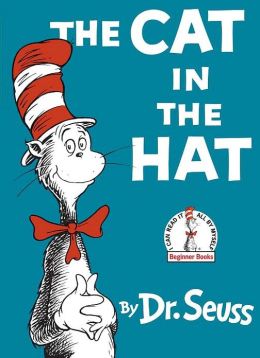
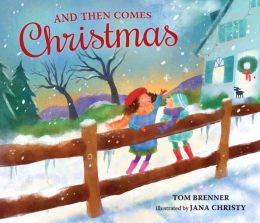
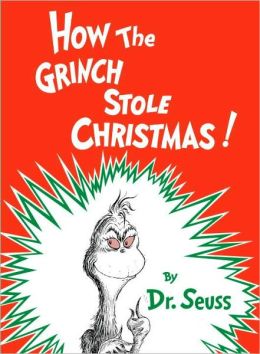

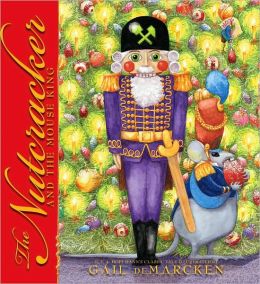
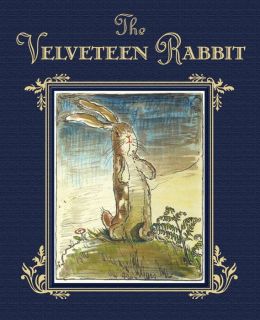

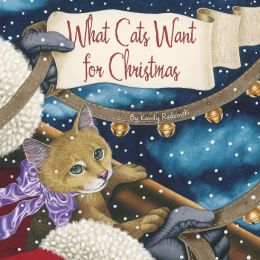

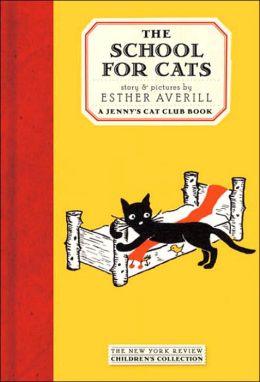
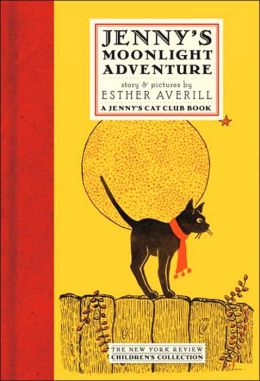

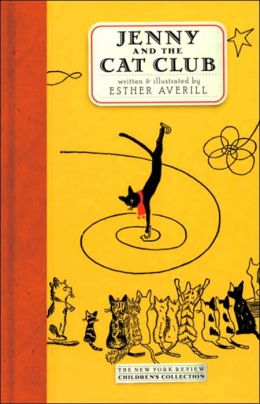
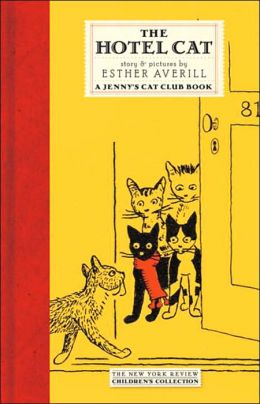

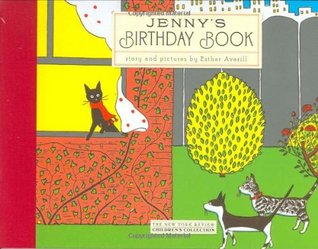

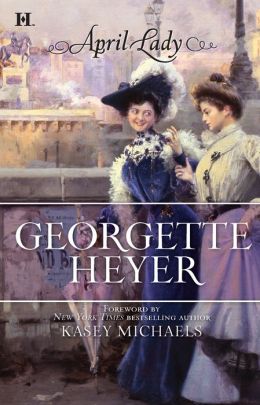
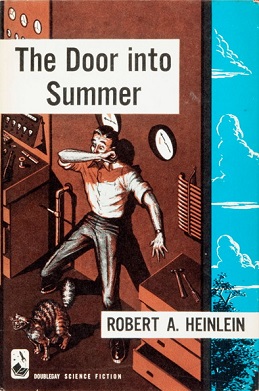


I had to laugh at your closing line-- "If this romance did not have such a great cast of "minor" characters, it would be awful." That's sort of typical of Georgette Heyer, isn't it?